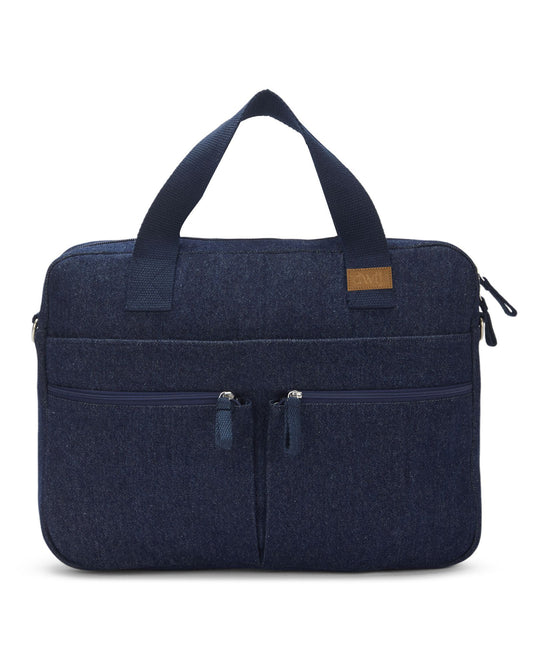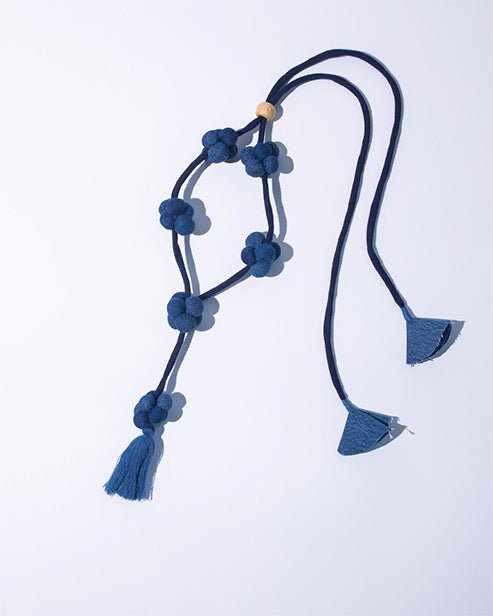In continuation to our A-Z series of Part 1 (A-I), Part 2 (J-Q), let's learn the Alphabets with a different approach:
R- REPAIR, REUSE, REWEAR, RECYCLE
The 4 R’s are the most talked about words in the world of recycling. Waste management is not just a routine method of collection of waste and disposing it off.
The first step in waste management starts from each of us. Repair whatever you can by procuring spare parts, and extending the life of what you use. As much as possible, try to adopt re-usable alternatives rather than disposable options.
In our daily lives, there are a plethora of ways you can avoid disposable options, a few of which such as disposable plates and cutlery, tissues, one-time pads etc. Re wearing existing collection takes a lot of commitment, especially in such times when fashion changes every season. Nevertheless, if each of us tries to open our closet and re-wear the ones left behind since many months, that itself would create an impact.
Finally, if the above options don’t work, think about how it can be recycled. Find out about invisible recyclers of India here.

S- SKILLED ARTISAN
How many of us appreciate the skill of the artisan who has made your bag or dress? Or, do we at least think about who would have actually made that product? Handmade products take a lot of skill and practice, before an artisan is able to make a good quality product.
Often, mechanization of the process makes it impossible for a common man to distinguish between a handmade product and machine-made products. We recently visited a silk saree weaving unit in one of the most popular hubs of India. The artisan mentioned he could weave a maximum of 2-3 sarees per month, while a machine could roll out 10-15 a month, and he admitted that only the people in the business can distinguish between both but not the common man.
Beware of the retailers who sell you mechanized product in the garb of ‘handmade’. A thorough research or community feedback would help before you make any purchase of handmade products.

T- THRIFT/SWAP
The ‘Buyerarchy’ of needs is a very useful and simple model to highlight all possible options that you could consider before you go ahead and make a purchase. It is important to realize that the price we pay for being fashionable is not just the price paid today for purchasing the product, but also the price that we pay to address the environmental damage in the future too. Fashion is not just in being trendy and having variety.
Sustainability along with a sustainable future was always a part of a normal Indian household. It’s time that we appreciate and revisit them. Find out how sustainable fashion can be practiced with these 5 simple steps.

U- UPCYCLED FASHION
Upcycling involves using the existing material to make a new value-added product, thereby increasing the longevity of the underlying material. Dwij is committed to make upcycling fashionable. At the same time, dwij is also committed towards other aspects of business such as giving our workers living wages and decent workplaces. An important focus area is hygiene in order to ensure that upcycled products are as good and hygienic as a new product. Find out here if Upcycled Fashion is "value for money?"

V- VISCOSE & RAYON
Viscose is made from natural sources such as wood, regenerated as cellulose fibre. Viscose is a type of rayon fibre, which is not to be misunderstood as synthetic although the properties might appear it to be synthetic.
Although the most popular uses of these fabrics are in the textile industry, manufacturing involves toxic chemicals. These chemicals although collected back in the process, there have been reported incidents in the past about its poisoning.

W- WET PROCESSING FACILITY
Ever wondered how much water goes into manufacturing of the garment that you are wearing? The above picture shows just a few out of many hard facts, which go unnoticed when you are just about to make a purchase.
Behind manufacturing of every garment, there is involvement of various people such as farmers, spinners, weavers, dyers, sewers, washers, and various other invisible people in the supply chain. Once the cotton is spun, it is combed and blended before being knitted on a loom into a fabric. Now starts the ‘wet processing’ before making a garment.
This involves washing, heating and treatments of various chemicals such as bleaching, printing, dyeing and fire-retardants or others that help achieve a desired softness or performance. The finished fabric then will be sent to a manufacturing facility, which will cut the fabric, sew the T-shirt, trim the threads, check for quality and pack for shipment. For example, check the cost of jeans here.
The vast majority of today’s fashion brands do not own their manufacturing and textile supplier facilities, making it challenging to monitor or control working conditions and environmental impacts across the supply chain. The fashion industry is regarded as one of today’s most globalized industries, involving complex, multinational and fragmented networks of producers, buyers, sellers and consumers all over the world.
By the way, did you know that India is a net exporter of water? It simply means that India exports more goods that are water thirsty that what it imports. The water required to grow cotton that is exported from India can feed 85% of the country with 100L of water daily. This fact largely goes unnoticed.

X- COLLABORATE
One industry’s waste could become raw material for other industries. Collaborations with, and between, the industry’s most pioneering sustainable brands can accelerate better practices across the industry. Large brands and retailers can use their size and platform to scaleup innovation.
Sustainable brand partnerships increase the pool of conscious consumers - growing the sustainable fashion market for all. No one is too small to make a difference. A hundred small hands joining together makes a big impact.

Y- YOUR ACTIONS MATTER
Everyone has their own reasons to make a purchase. The above extremities can be alleviated if we try to move from being just a consumer to becoming ‘conscious consumer’ by questioning every purchase decision. We must acknowledge that we are all collectively responsible for the above environmental concerns, and therefore we need to all collectively move towards implementing solutions.
It is our actions that matter, and define the way companies carry out the business.

Z- ZERO WASTE FASHION
Zero waste is becoming a buzz word and is gaining momentum in today's world, especially in relation to sustainable practices. It involves not just recycling or upcycling but also ensuring that every resource is utilized in the best manner possible. It even goes beyond, to take a 'wider system' approach by tracking the flow of resources and ensuring its effective utilization even after end of life. In simpler terms, it implies that every resource on this planet has a value beyond monetary terms.
Dwij strives to becoming a zero-waste organization and is always in the process of working towards this goal. The manufacturing process and the product designs are worked out in such a manner that a garment of any dimension can be transformed into one of our products in the collection.
"Zero waste" is not just a concept. Dwij looks at it as a philosophy that needs to be imbibed at an organizational level and at a personal level too.

How can you help?
1. Choose an issue or a few issues about which you are passionate
2. Educate yourself by reading articles/watching documentaries
3. Educate your family, friends about the issue.
4. Find other activists who share your concerns & network
5. Intervene & report if you witness cruelty, abuse or neglect.
6. Demand stricter laws
7. Buy products from brands who have stringent values in place
8. Reduce your consumption







